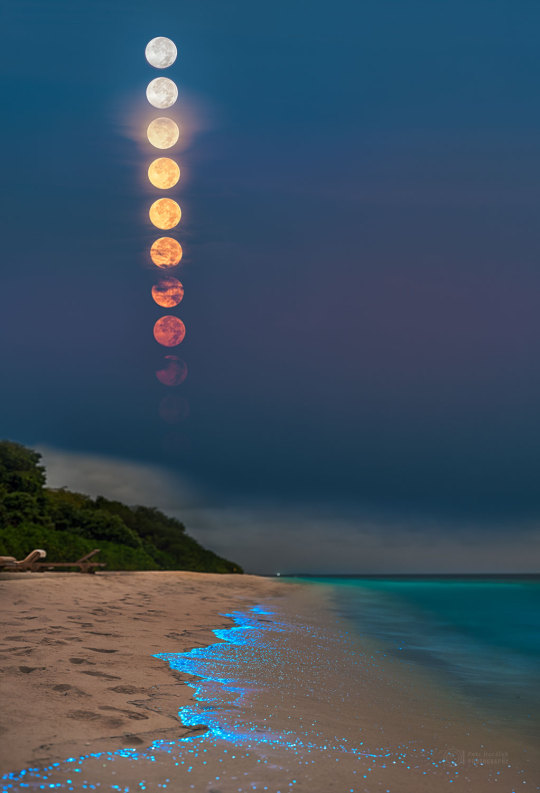#apod
Explore tagged Tumblr posts
Text

Dragon's Egg in the Cosmic Cloud ©
#nebula#ngc 6164#dragon's egg#space#astrophotography#stars#planet#galaxy#universe#cosmos#astronomy#solar system#nasa#apod#night sky
275 notes
·
View notes
Text

Storm cloud over Texas l Laura Rowe NASA APOD
#space#storm#thunderstorm#clouds#astrophotography#astronomy#nasa#apod#photography#planets#earth#texas#sky
11K notes
·
View notes
Text

The Great Meteor Storm of 1833
1K notes
·
View notes
Photo

Explanation: What is the cause of this unusual parabolic structure? This illuminated cavity, known as LDN 1471, was created by a newly forming star, seen as the bright source at the peak of the parabola. This protostar is experiencing a stellar outflow which is then interacting with the surrounding material in the Perseus Molecular Cloud, causing it to brighten.
APOD: 2024 November 17 – LDN 1471: A Windblown Star Cavity
87 notes
·
View notes
Photo

The Seagull Nebula
176 notes
·
View notes
Text

Fresh Tiger Stripes on Saturn's Enceladus Image Credit: NASA, ESA, JPL, SSI, Cassini Imaging Team Explanation: Do underground oceans vent through canyons on Saturn's moon Enceladus? Long features dubbed tiger stripes are known to be spewing ice from the moon's icy interior into space, creating a cloud of fine ice particles over the moon's South Pole and creating Saturn's mysterious E-ring. Evidence for this has come from the robot Cassini spacecraft that orbited Saturn from 2004 to 2017. Pictured here, a high resolution image of Enceladus is shown from a close flyby. The unusual surface features dubbed tiger stripes are visible in false-color blue. Why Enceladus is active remains a mystery, as the neighboring moon Mimas, approximately the same size, appears quite dead. An analysis of ejected ice grains has yielded evidence that complex organic molecules exist inside Enceladus. These large carbon-rich molecules bolster -- but do not prove -- that oceans under Enceladus' surface could contain life.
Today's Astronomy Picture of the Day is my favorite celestial object, the reason I got into space and science at all! As a child the idea that the subsurface oceans of Enceladus could potentially host alien life spurred my imagination and desire to learn all about it.
#apod#astronomy picture of the day#enceladus#saturn#astronomy#cassini#nasa#esa#jpl#alien life#astrobiology
67 notes
·
View notes
Text

The Moon Dressed Like Saturn ©
#moon#nasa#apod#space#universe#astrophotography#stars#planet#solar system#galaxy#astronomy#cosmos#night sky
11K notes
·
View notes
Text

"THIS STUNNING, DEEP VIEW OF THE LAGOON IS NEARLY 100 LIGHT-YEARS ACROSS."
PIC INFO: Resolution at 1401x2048 -- Spotlight on the The Wide and Deep Lagoon. 📸/🔭: Image & Copyright: Michael Miller, Jimmy Walker.
EXPLANATION/OVERVIEW: "Ridges of glowing interstellar gas and dark dust clouds inhabit the turbulent, cosmic depths of the Lagoon Nebula. Also known as M8, the bright star forming region is about 5,000 light-years distant. But it still makes for a popular stop on telescopic tours of the constellation Sagittarius, toward the centre of our Milky Way Galaxy. Dominated by the telltale red emission of ionized hydrogen atoms recombining with stripped electrons, this stunning, deep view of the Lagoon is nearly 100 light-years across. Right of centre, the bright, compact, hourglass shape is gas ionized and sculpted by energetic radiation and extreme stellar winds from a massive young star. In fact, the many bright stars of open cluster NGC 6530 drift within the nebula, just formed in the Lagoon several million years ago."
-- ASTRONOMY PICTURE OF THE DAY (APOD), published on September 9, 2016
Source: www.star.ucl.ac.uk/~apod/apod/ap160909.html.
#The Wide and Deep Lagoon#Astronomy#APOD#Wide and Deep Lagoon#Space#Outer Space#Deep Space#Space is Deep#Astrophotography#Constellation Sagittarius#Milky Way Galaxy#Colorful#M8#M8 Bright Star Forming Region#Solar System#Bright Star Forming Region#Open Cluster#Astronomy Picture of the Day#Open Cluster NGC 6350#Massive Young Star#Stars#NGC 6350#Lagoon Nebula#Nebulae#Nebula#NASA
22 notes
·
View notes
Text

Three Together via NASA APOD

#comet pons brooks#comet#jupiter#planets#moon#crescent moon#space#astrophotography#astronomy#solar system#stars#sky#galaxy#universe#nasa#apod#night
4K notes
·
View notes
Photo

Explanation: The largest canyon in the Solar System cuts a wide swath across the face of Mars. Named Valles Marineris, the grand valley extends over 3,000 kilometers long, spans as much as 600 kilometers across, and delves as much as 8 kilometers deep.
APOD: 2024 November 10 – Valles Marineris: The Grand Canyon of Mars
49 notes
·
View notes
Text





Dancing in the moonlight
#moonlight#full moon#aesthetic#universe#astronomy#galaxy#stars#space#project moon#moon lovers#apod#moon#moon photography#astrophotography
25 notes
·
View notes
Text

From NASA (Astronomy Picture of the Day - March 11, 2024)
What glows in the night? This night featured a combination of usual and unusual glows. Perhaps the most usual glow was from the Moon, a potentially familiar object. The full Moon's nearly vertical descent results from the observer being near Earth's equator. As the Moon sets, air and aerosols in Earth's atmosphere preferentially scatter out blue light, making the Sun-reflecting satellite appear reddish when near the horizon. Perhaps the most unusual glow was from the bioluminescent plankton, likely less familiar objects. These microscopic creatures glow blue, it is thought, primarily to surprise and deter predators. In this case, the glow was caused primarily by plankton-containing waves crashing onto the beach. The image was taken on Soneva Fushi Island, Maldives just over one year ago. Photographer credit: Petr Horalek
71 notes
·
View notes
Text

Hula Hoop
#nasa#cassini#space#saturn#astrophotography#planet#solar system#stars#galaxy#cosmos#astronomy#universe#apod#night sky#jupiter#uranus#neptune#webb#james webb telescope#sky#planets#1910s#vintage#history#outer space#night#astrology observations#astrologynuances#astro observations#love astrology
34 notes
·
View notes


